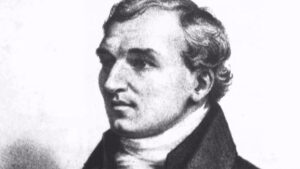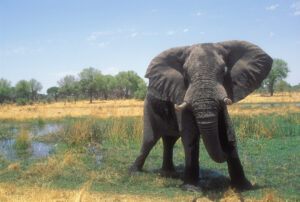Exploring West Africa in the guise of a trader was far from normal for a 19th-century English woman. But not for Mary Kingsley.
Kingsley lived with local people, met tribes rumored to indulge in cannibalism, and traipsed through previously uncharted jungles. Later, she published her unconventional views on African customs and became a celebrity. However, she disliked the narrative of the “empowered woman” that the press foisted upon her.
Kingsley’s isolated upbringing acclimatized her to a life of adventure. Her parents wed just four days before her birth. Her mother, who had been her father’s cook, didn’t fit into his aristocratic social circle. He traveled extensively, sometimes for years at a time, and was seldom home. Kingsley’s mother claimed to be ill and imprisoned herself at home. She kept a silent house. The shutters stayed permanently closed.
Her father’s library was her most precious resource
Kingsley’s father chose not to formally educate her. Instead, she cared for her mother. Kingsley found solace in the books that her father collected during his travels, stacked floor to ceiling in his library. When he returned home, Kingsley marveled at the wonderful travel stories he’d share.
“The whole of my childhood and youth was spent at home, in the house and garden,” Kingsley explained in Katherine Frank’s A Voyager Out. “The living outside world I saw little of and cared less for. I felt myself out of place at the few parties I ever had the chance of going to, and I deservedly was unpopular with my own generation…The truth was I had a great amusing world of my own [that] other people did not know or care about—that was the books in my father’s library.”
Book smarts seemed to run in the family. Kingsley’s uncle authored the famous children’s novel The Water Babies. Her father was partway through writing his own book when he died suddenly in his sleep.
When Kingsley’s mother died within weeks of her father, she was free to embark on any unconventional journey her imagination could conjure.
Off to Africa
In 1893, dressed in Victorian spinster attire (a high-necked black blouse, long black woolen skirt, buttoned leather boots, and small sealskin hat), she set off for West Africa.
“You have no right to go about Africa in things you would be ashamed to be seen in at home,” she later wrote of her formal attire.

Mary Kingsley rides a canoe with the men who accompanied her along the Ogowe River. Photo: Serial Reader
Africa was an unlikely choice for a European woman. This “white man’s grave” was not considered a safe destination for male visitors, much less for women. Indeed, those who traveled there were usually wives of government officials or missionaries. Always, a husband escorted them.
Kingsley was direct, poised, and confident. Motivated by the prospect of finishing her father’s book, studying law, and investigating African religions, she wasn’t concerned about potential risks.
Initially, she spent four months living with locals in Sierra Leone, learning their customs. Realizing that local villages might be more accepting of a trader, she promptly took up this new profession. Trading allowed her to gain access to otherwise inaccessible people and places while remaining independent.
When she returned to England, Kingsley accepted a book deal and was granted funding for her next trip. In 1894, she returned to Africa.

Mary Kingsley gained the respect of the Fang tribe. Photo: The Victorian Web
Second major journey
This time Kingsley planned to explore the Ogowe River, which ran through the Congo’s Gabon area. The area was largely unknown in England, and her journey involved wading through dense rainforest in which dwelt little-known tribes.
Kingsley did not shy away from confrontations. Only one European man had ventured through the area before, and he had vanished. But Kingsley believed that traveling as a trader would make her less threatening.
Accompanied by several men and an interpreter, Kingsley traveled more than 100km through the dense forest of the Ogowe River region. When she met with aggressive tribesmen wielding weapons, she resolved the conflict with ease. Eventually, Kingsley won the respect of these Fang people.
“A certain sort of friendship soon arose between the Fang and me,” she wrote. “We each recognized that we belonged to that same section of the human race with whom it is better to drink than to fight.”
On one occasion, while sleeping in the house of a Fang chieftain, she noticed a foul odor. Upon investigation, she came across a bag with a human hand, three big toes, four eyes, two ears, and other human remains.
First European to explore the area
Kingsley carried a knife and revolver but never used them. She emerged for her expedition as the first European to successfully explore the area. To her credit, she didn’t take kindly to the idea she had “discovered” its people.
Because of her unconventional upbringing, Kingsley was never one to follow the crowd. She successfully confronted some of the toughest tribes known to man. She was comfortable challenging popular European views on African customs too.
Kingsley thought that colonialism was harmful to Africans, that witch doctors were beneficial, polygamy necessary, and domestic slavery not entirely bad. At a time when Europeans believed Africans needed both Christianity and colonialism for survival, Kingsley publicly expressed the opposite.
Her interest in traditional African religious practices led her to a chance encounter with another European woman. Mary Slessor was also traveling Africa without a husband.
Slessor had chosen to focus on stopping the tradition of twin killing in Okoyong, an area of modern Nigeria. Locals believed that twins were the result of an encounter with the devil. Without knowing which of the twins to sacrifice, both were often killed. So was the mother.
When the women met, Slessor was caring for a mother and one surviving twin. Kingsley and Slessor became fast friends and confidants.
Uninterested in women’s suffrage
Kingsley’s writings, on her travels and African customs, were so articulate and profound that she became a celebrity. Some in the media linked her to the European feminist movement, but Kingsley was uninterested in women’s suffrage. She was interested in Africa.
Kingsley didn’t just hobnob around Africa. She engrossed herself entirely. She canoed past crocodiles, encountered supposed cannibal tribes, and traipsed steamy jungles. To fund her adventures, she bartered rum, gin, and fish hooks. She collected beetles and fish specimens for British museums. Some fish species were new discoveries and were later named after her. Once she returned with a previously unknown snake and eight new species of insect.
When the Boer war broke out, Kingsley was dismayed. She volunteered as a nurse in Cape Town. But caring for injured patients in a dirty makeshift hospital took its toll.
Typhoid ravaged the hospital and struck Kingsley down. Knowing she was short on time, she expressed her preference to die alone and be buried at sea. She died two months after she had arrived in Cape Town, at aged 37. Her coffin was cast to the ocean floor off Cape Point.






